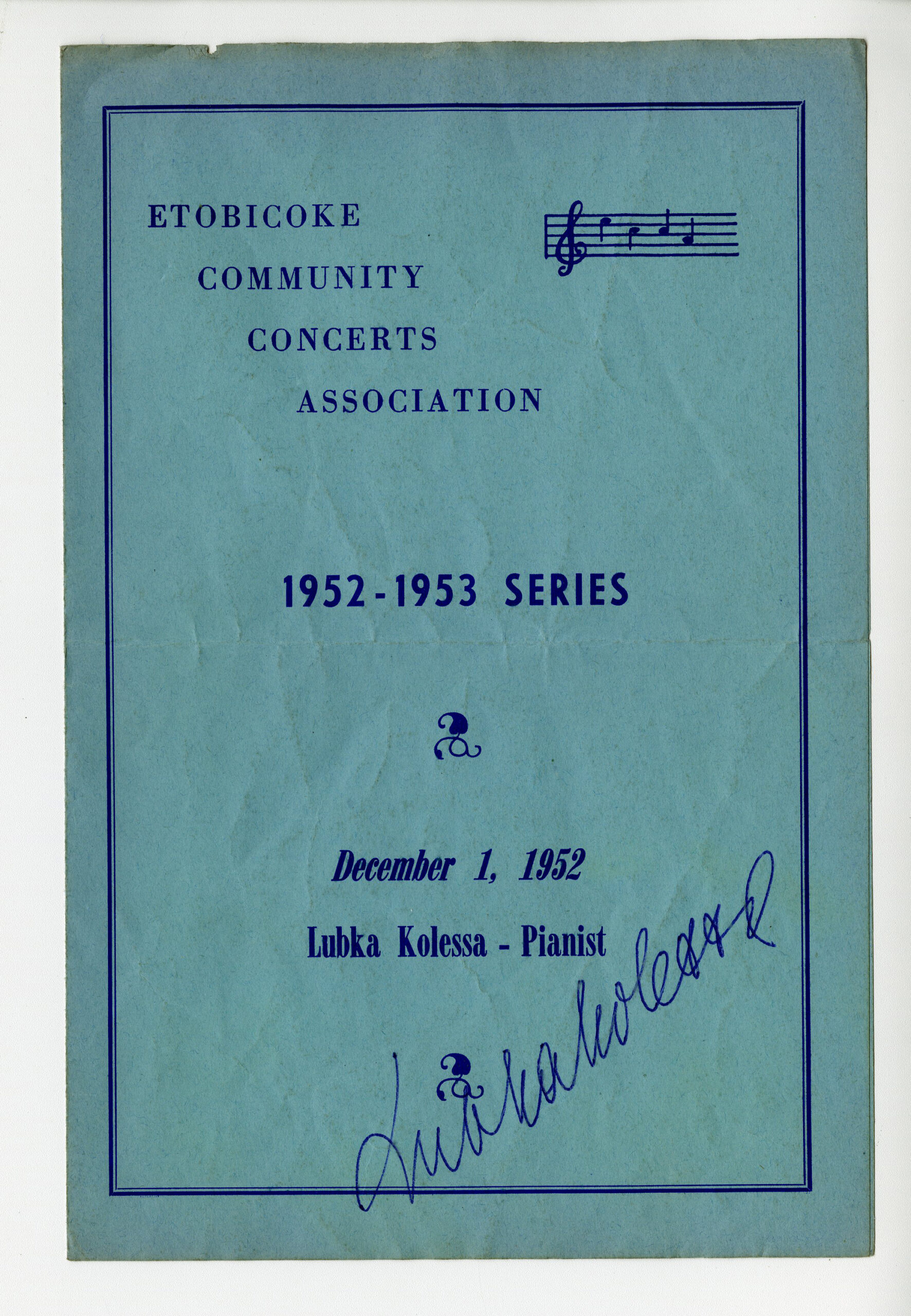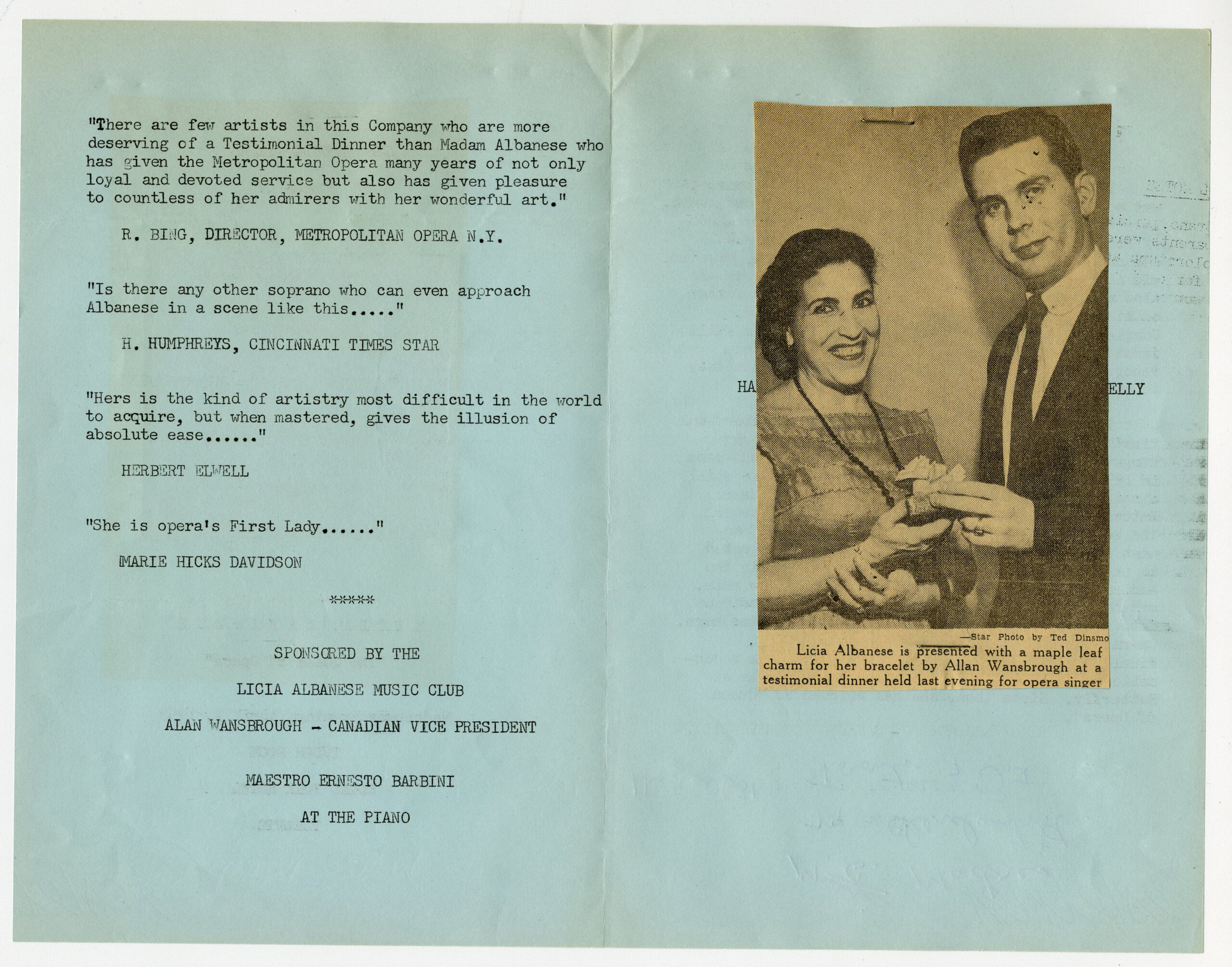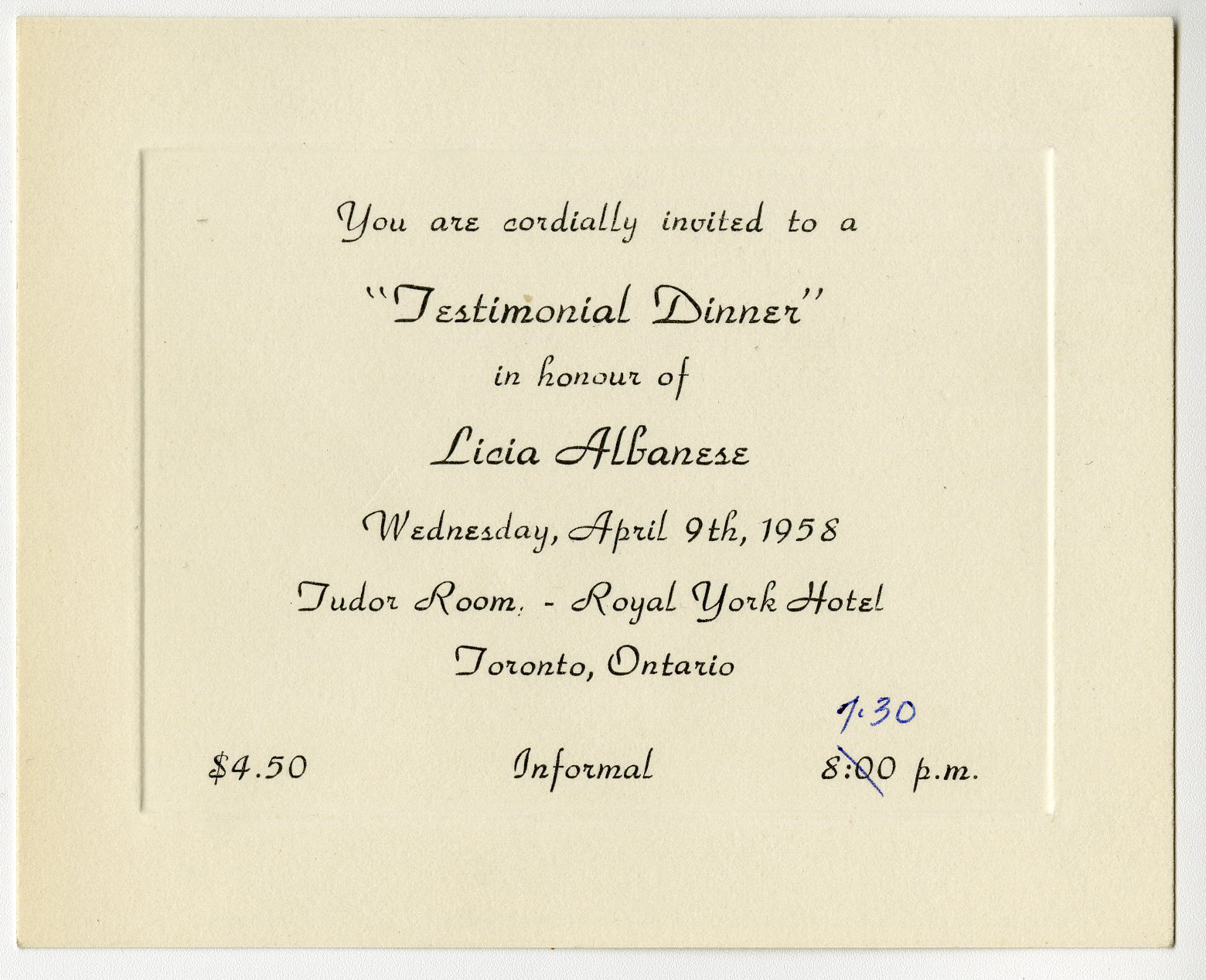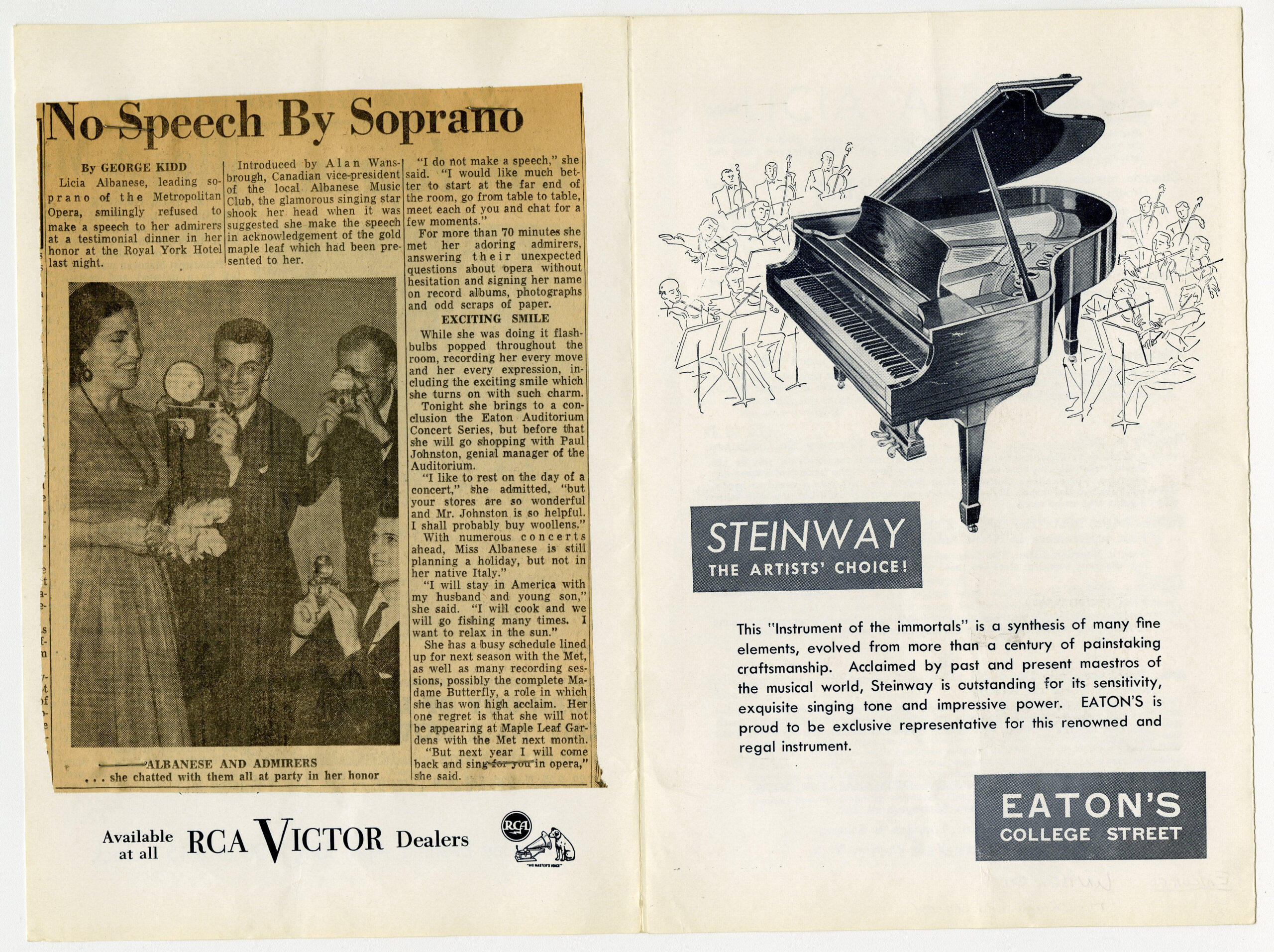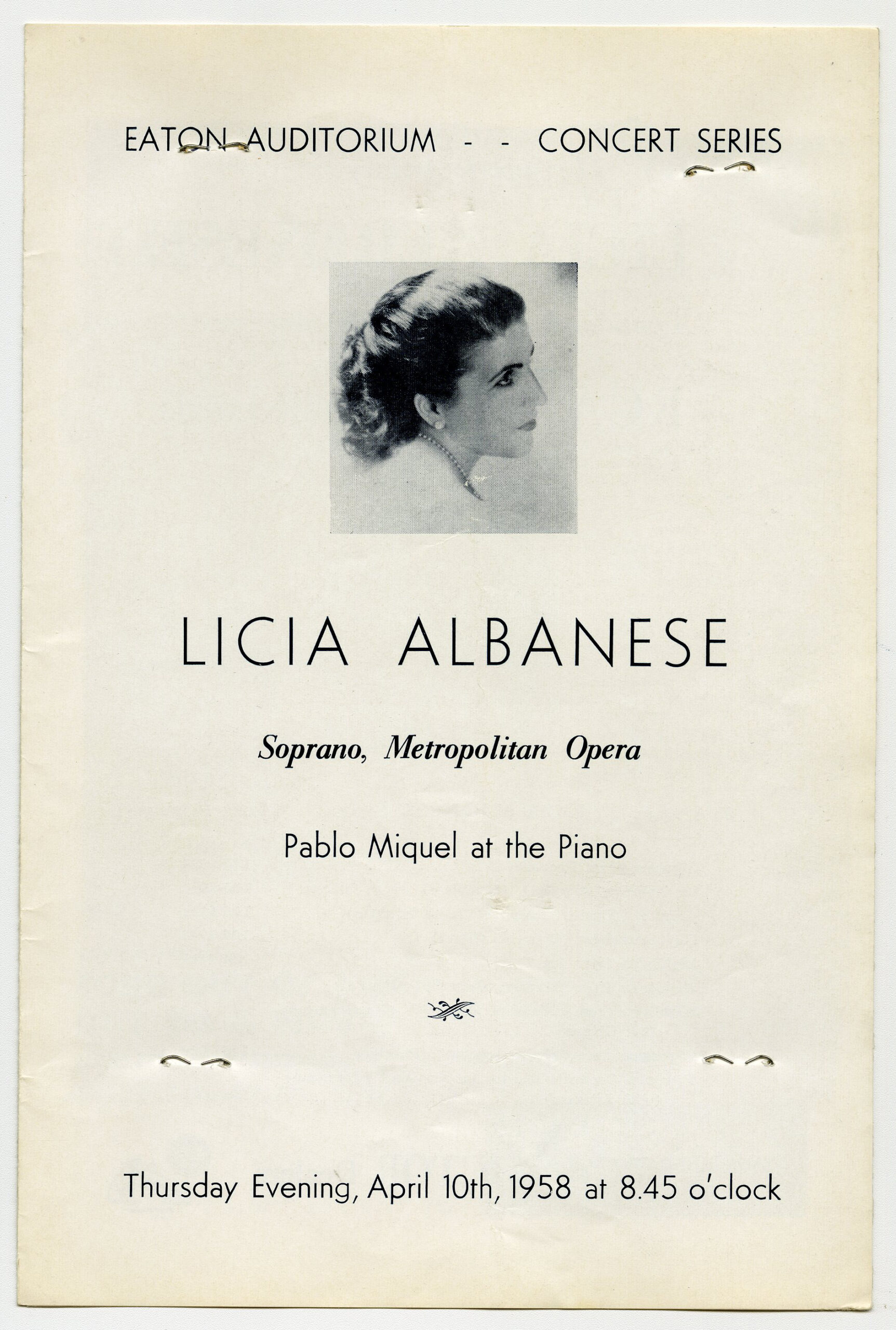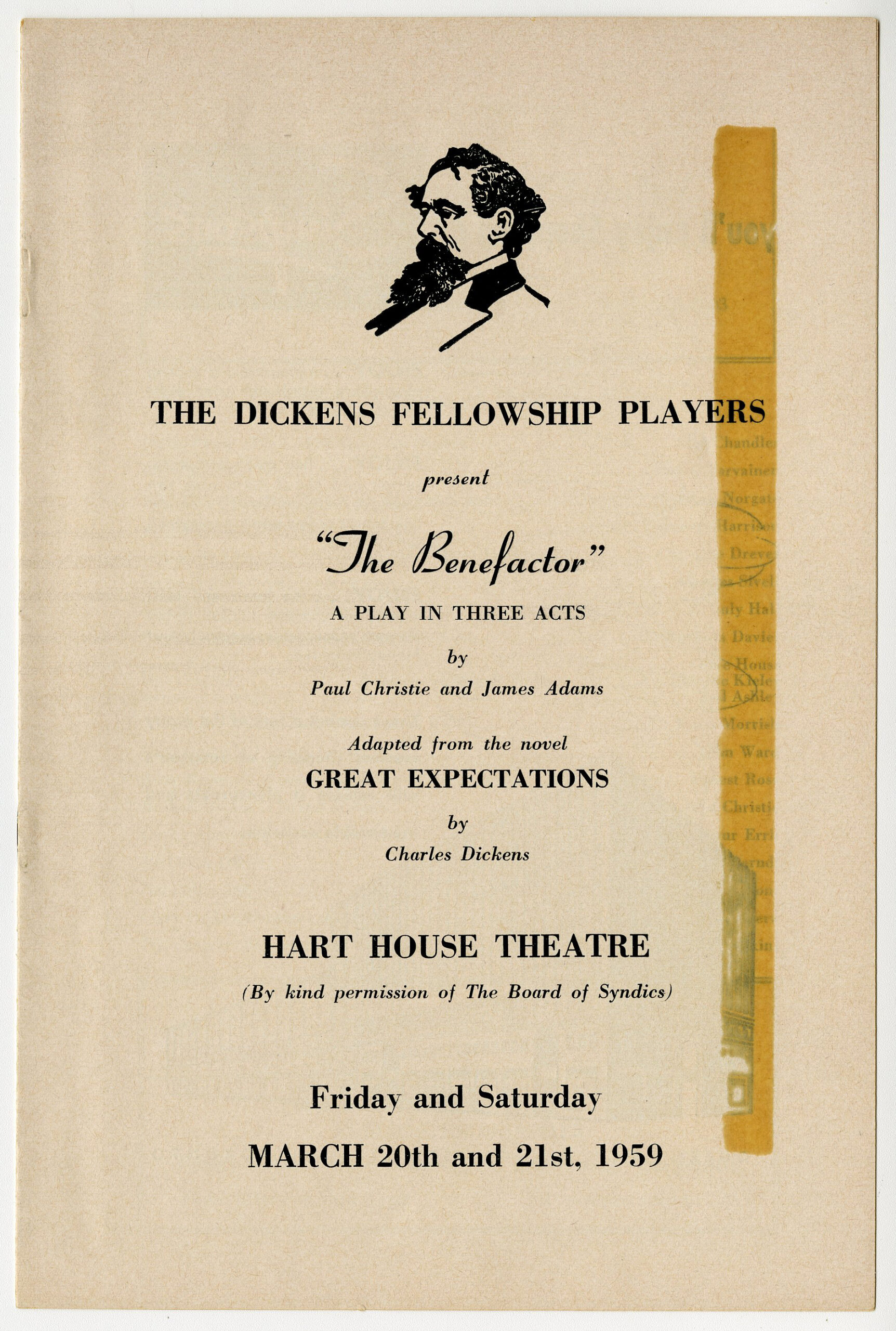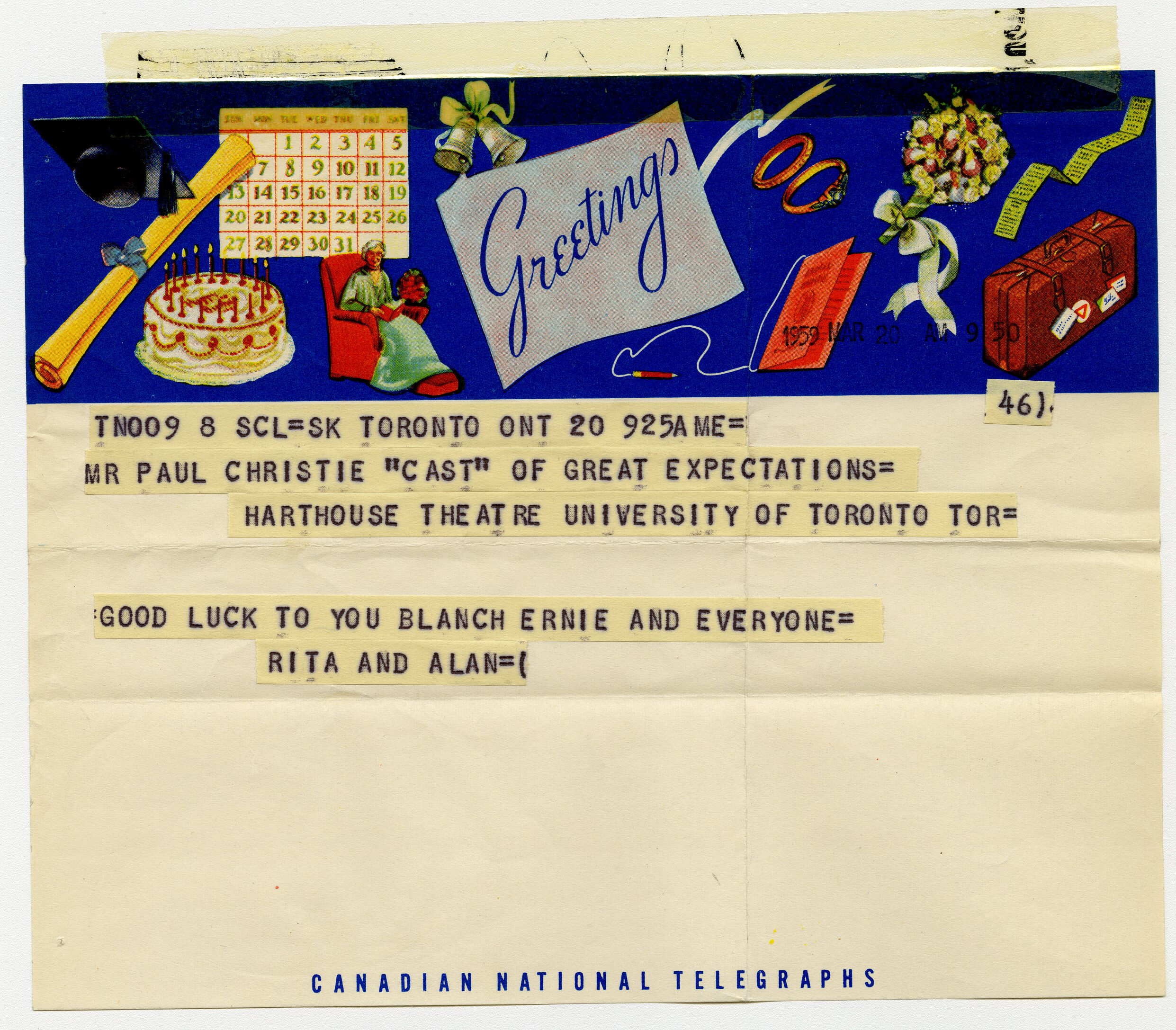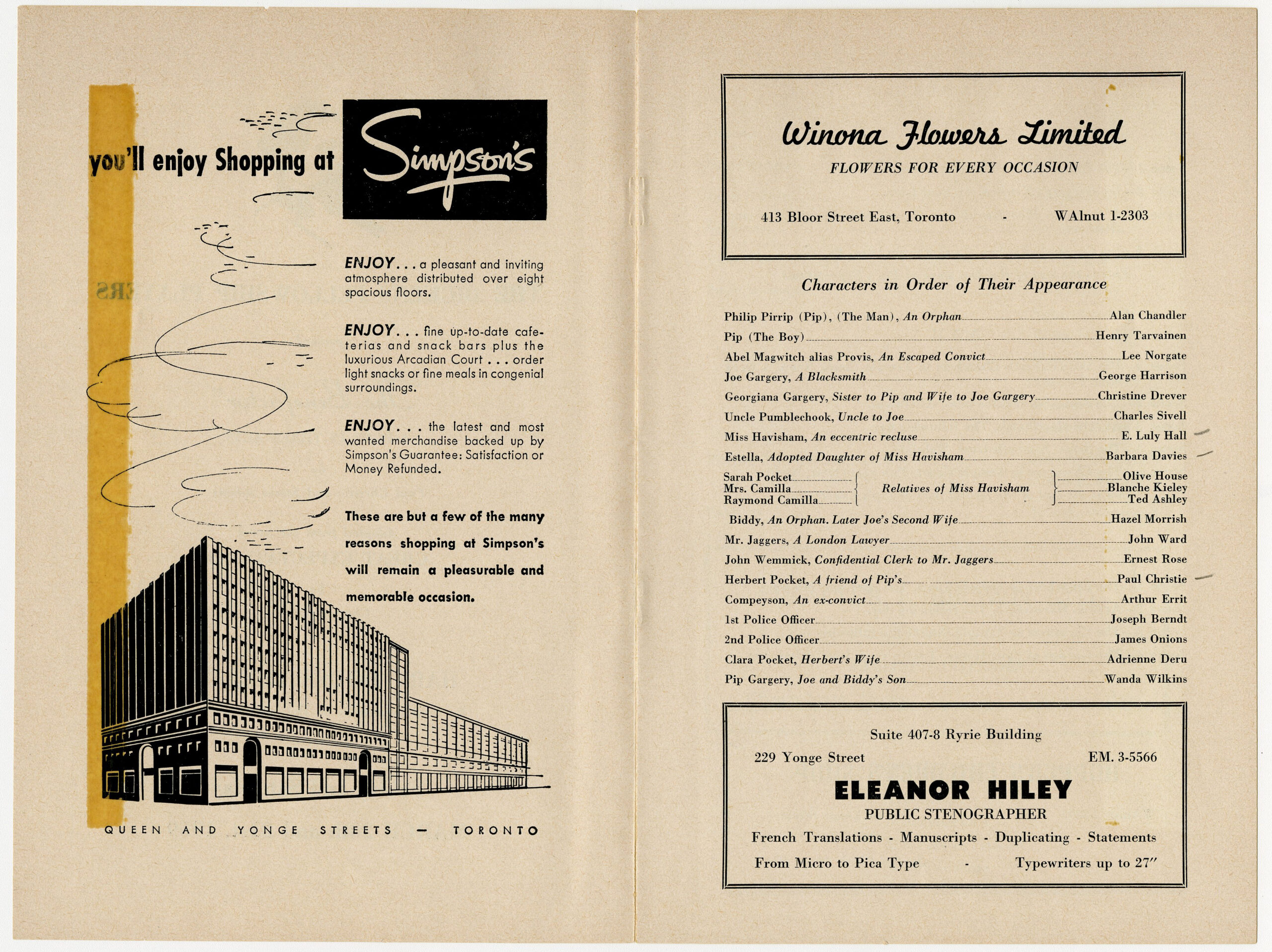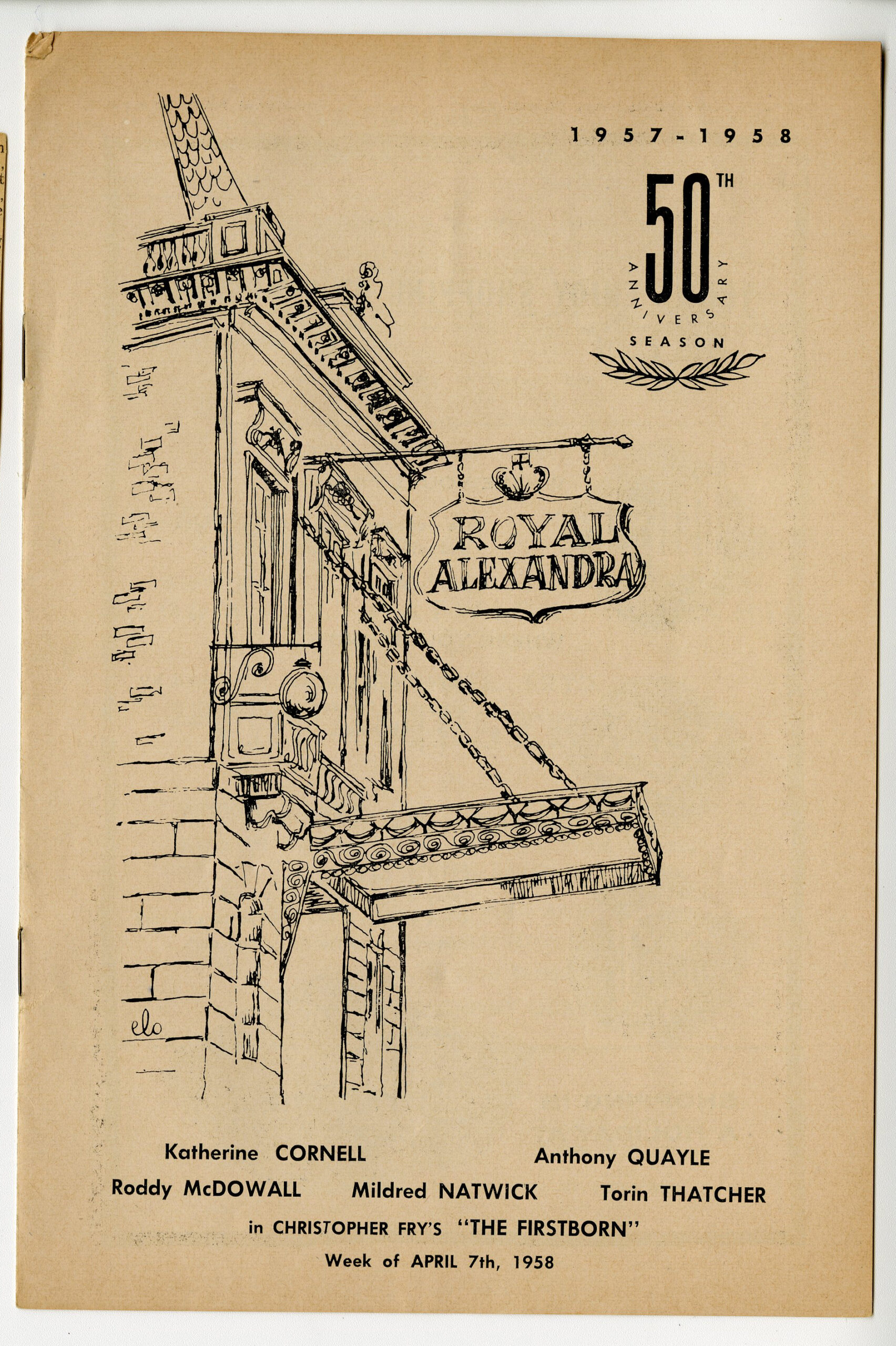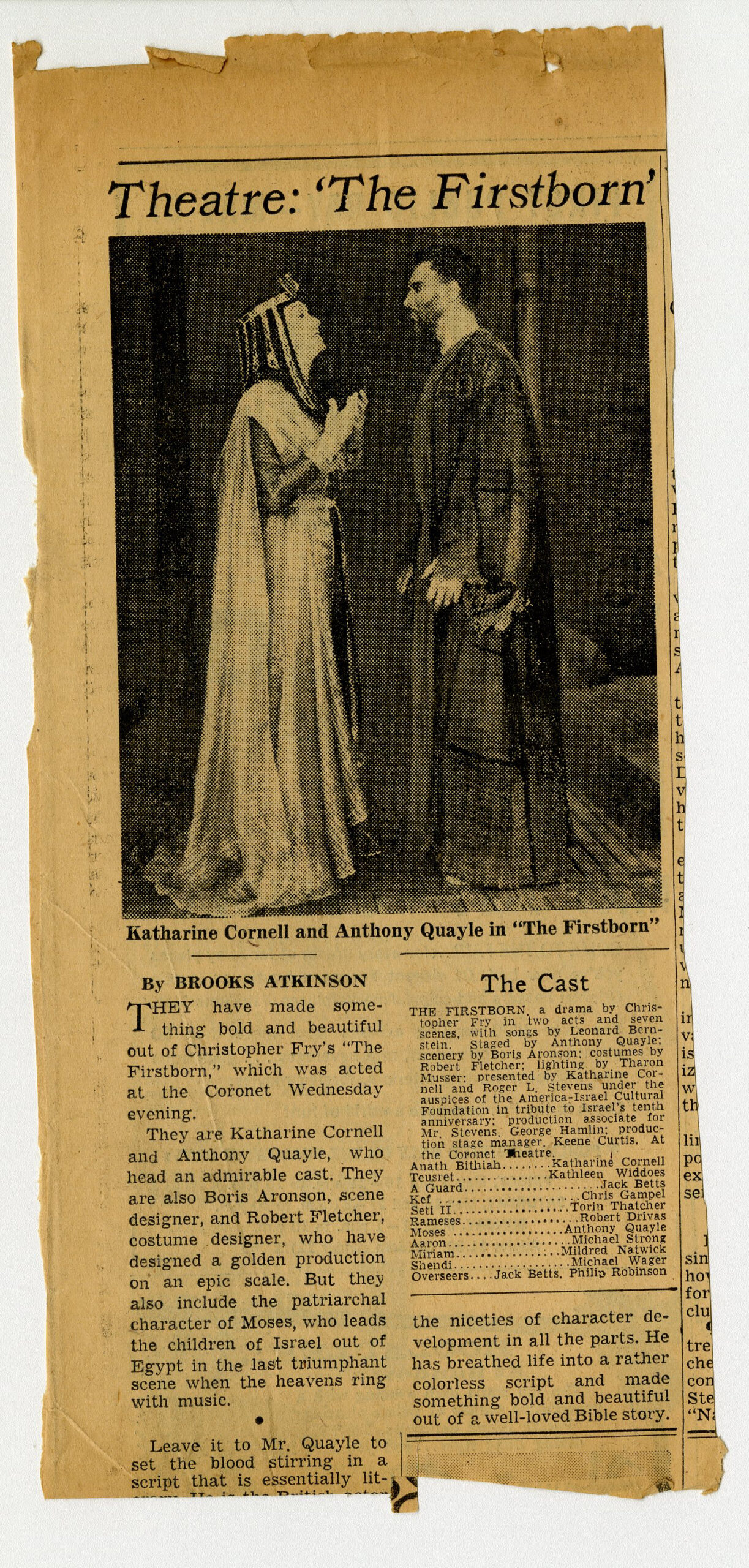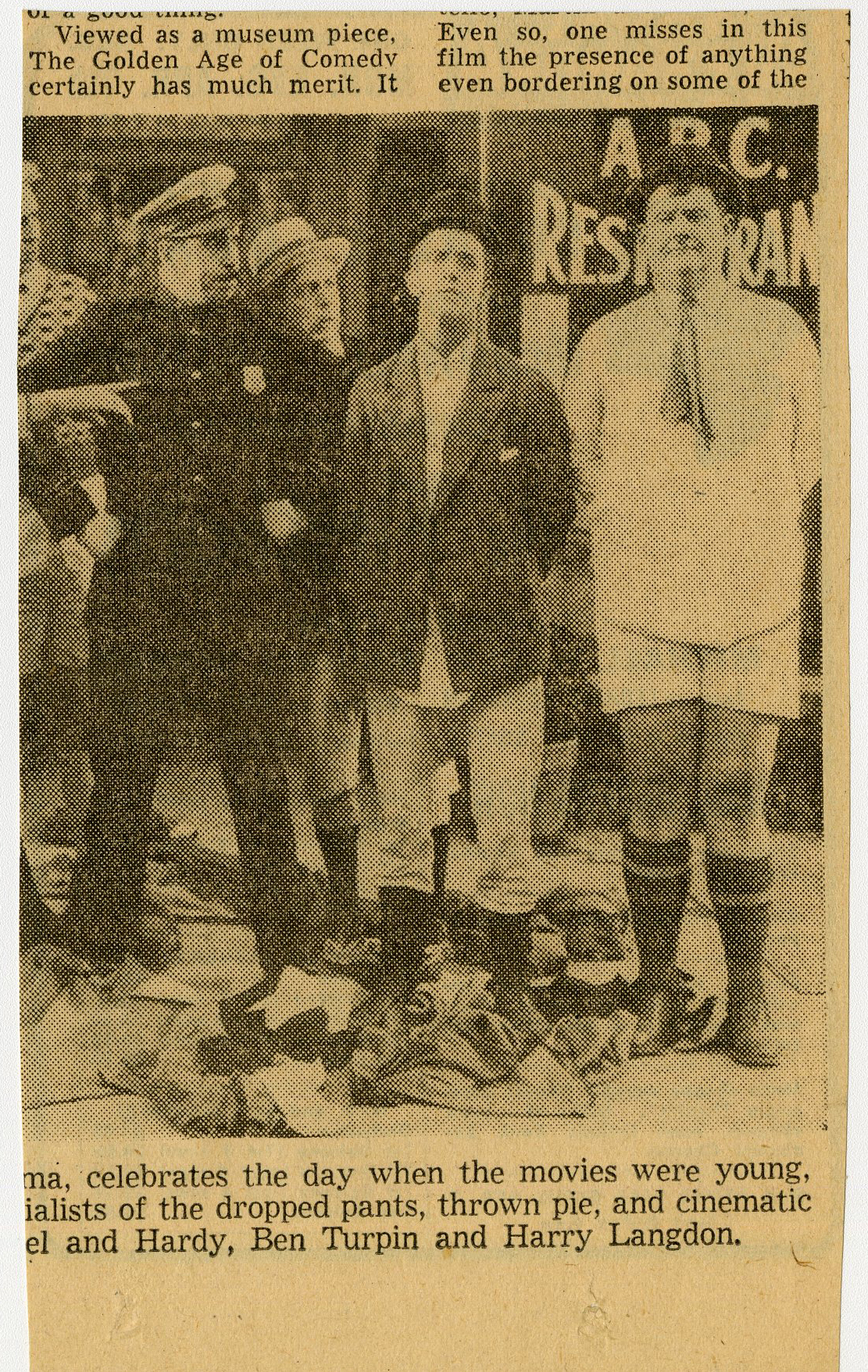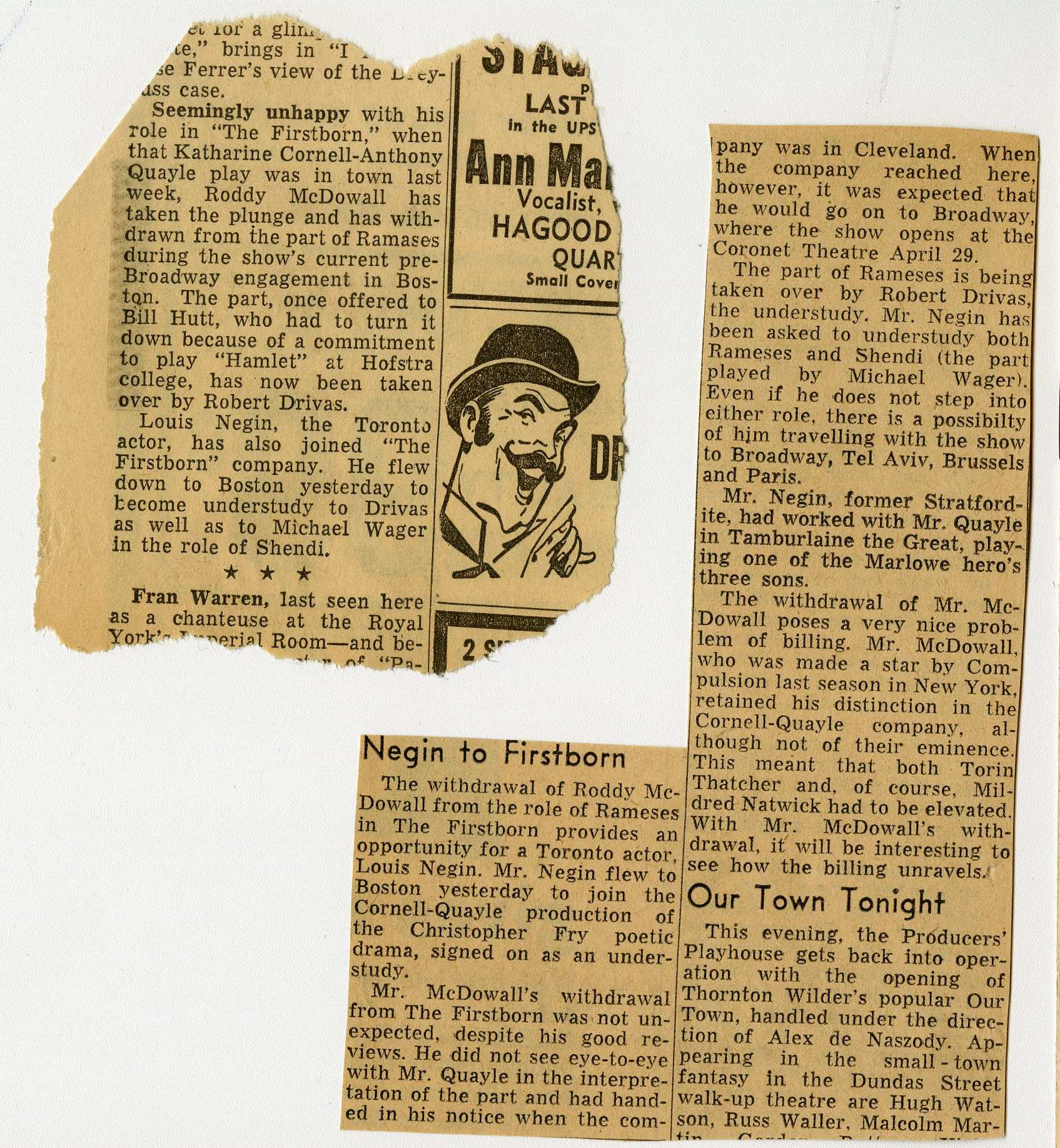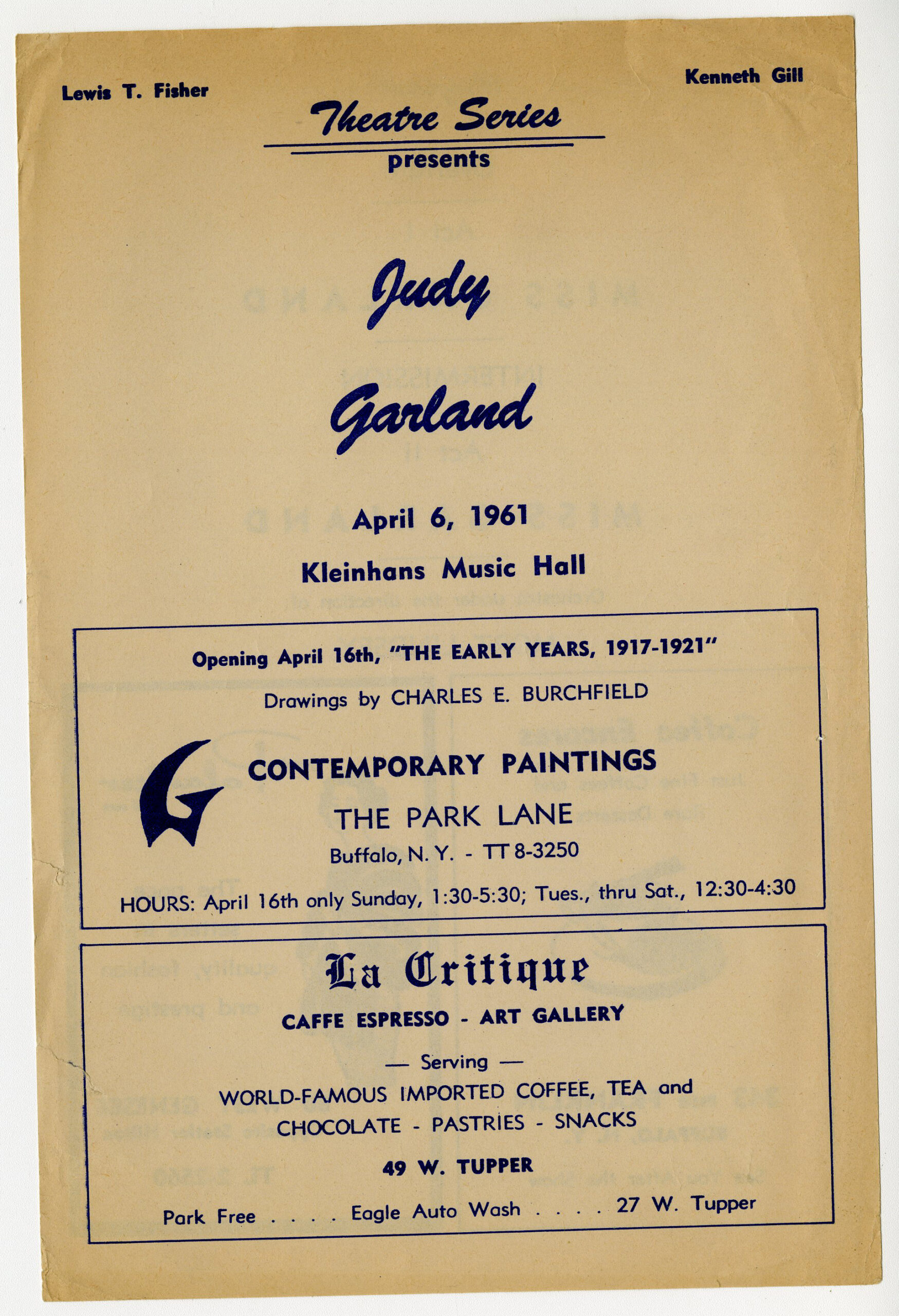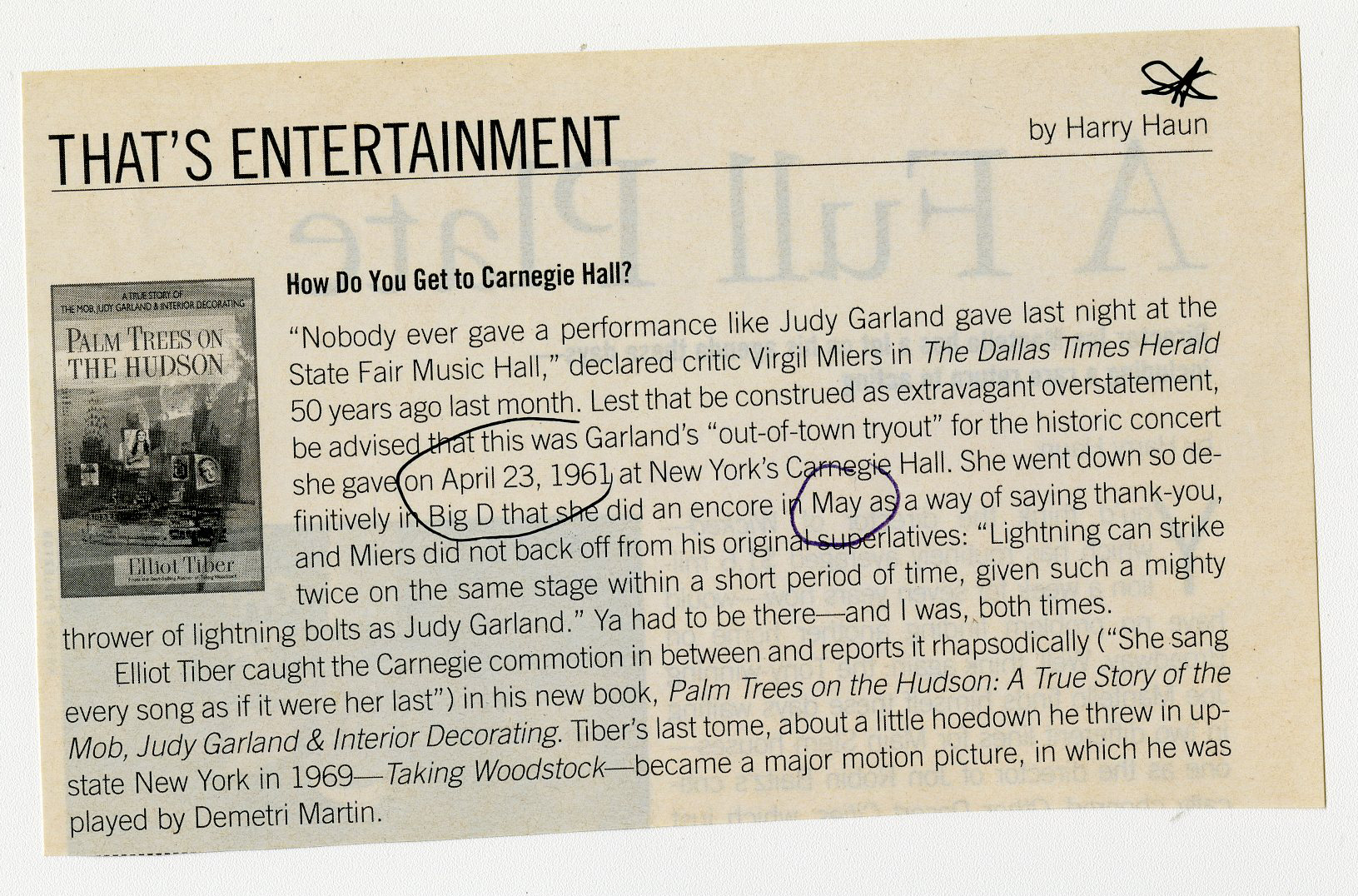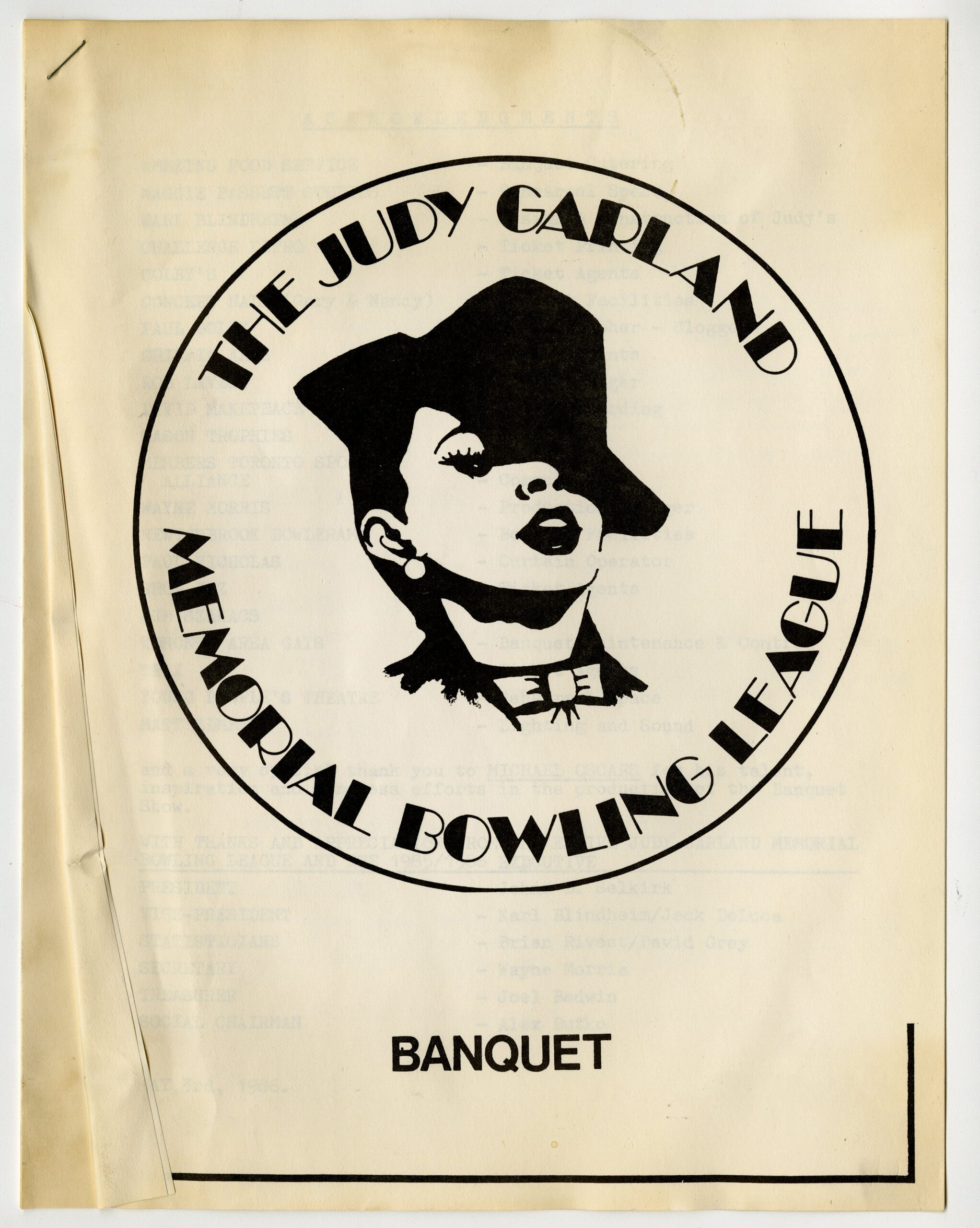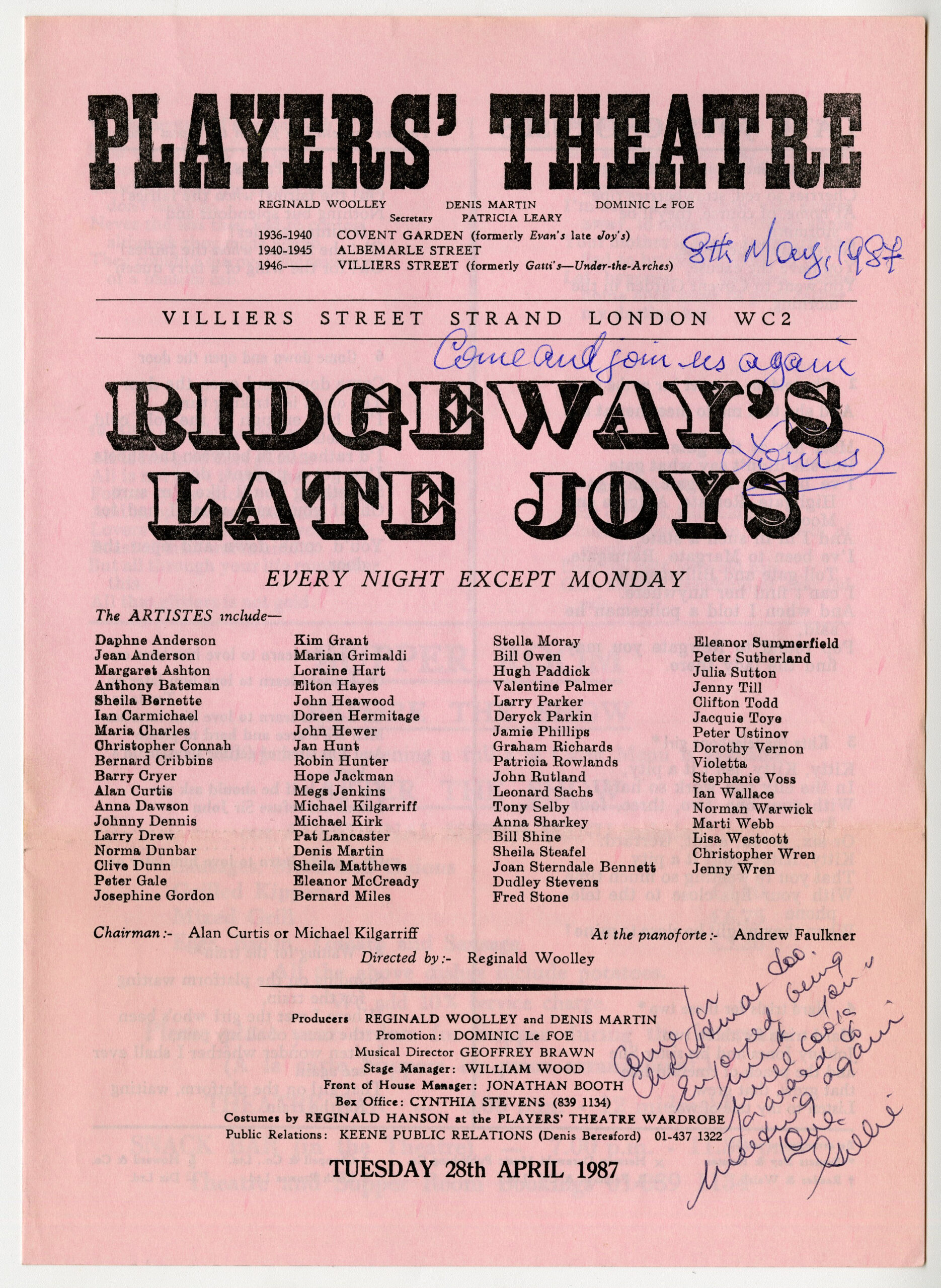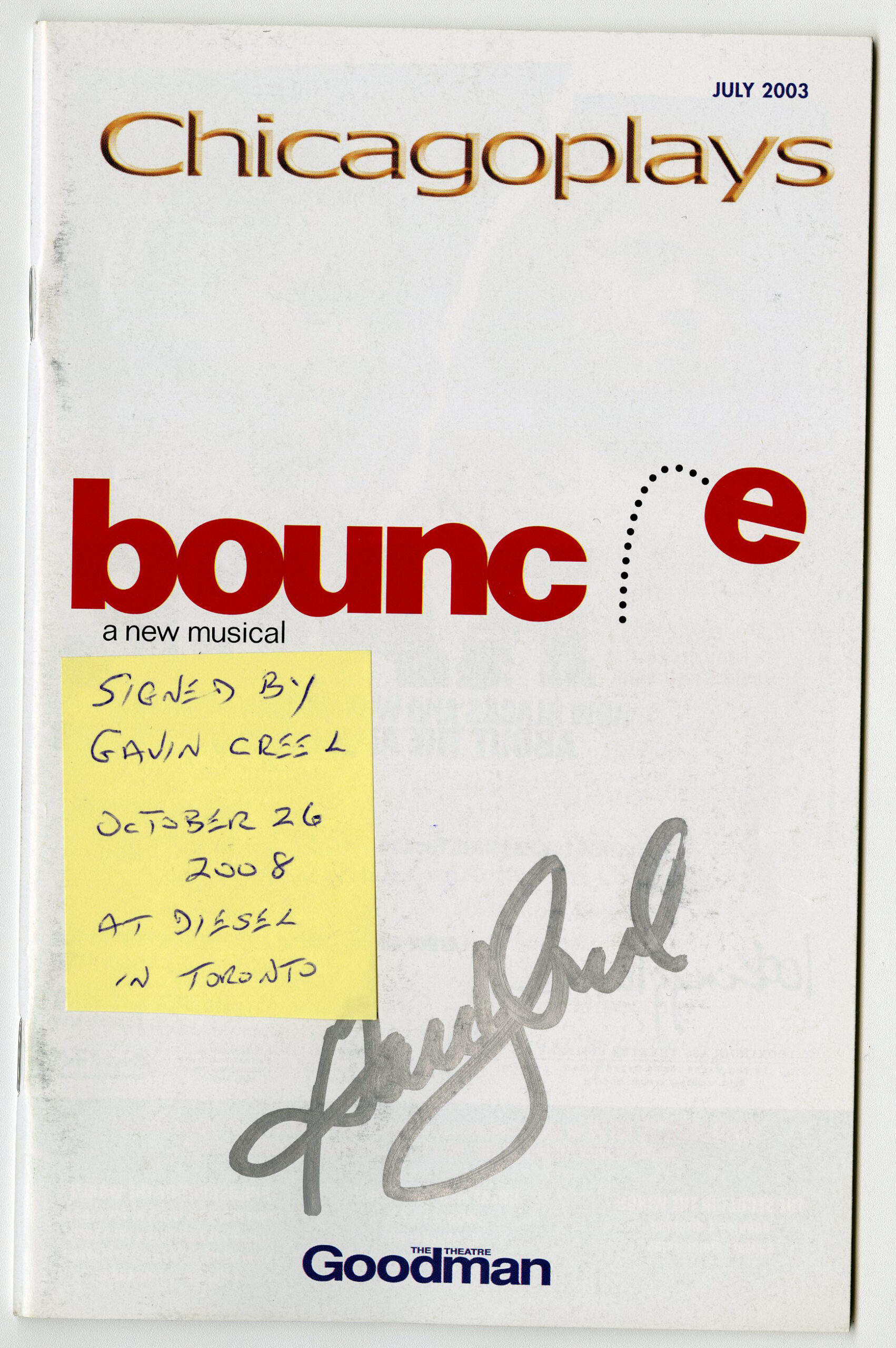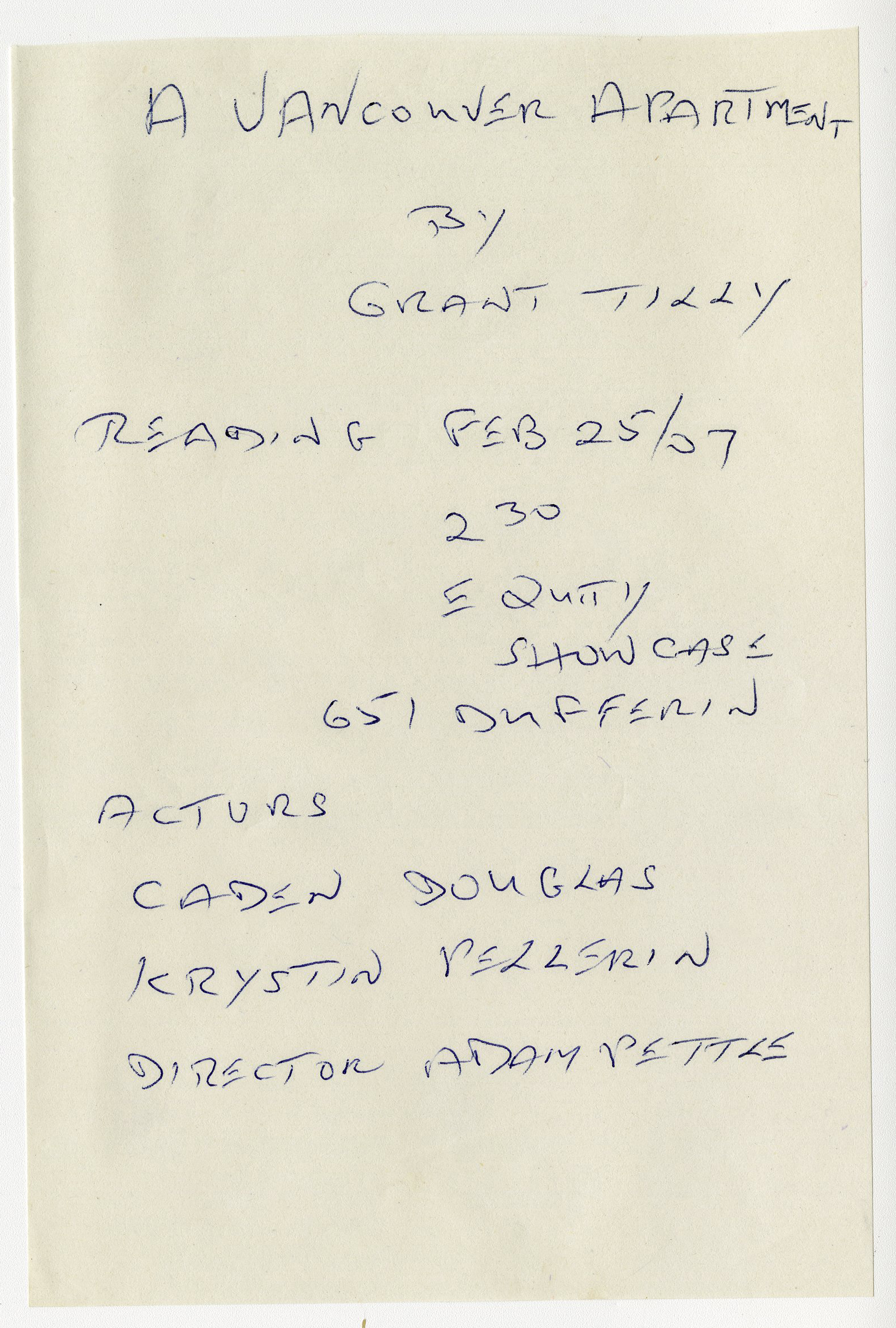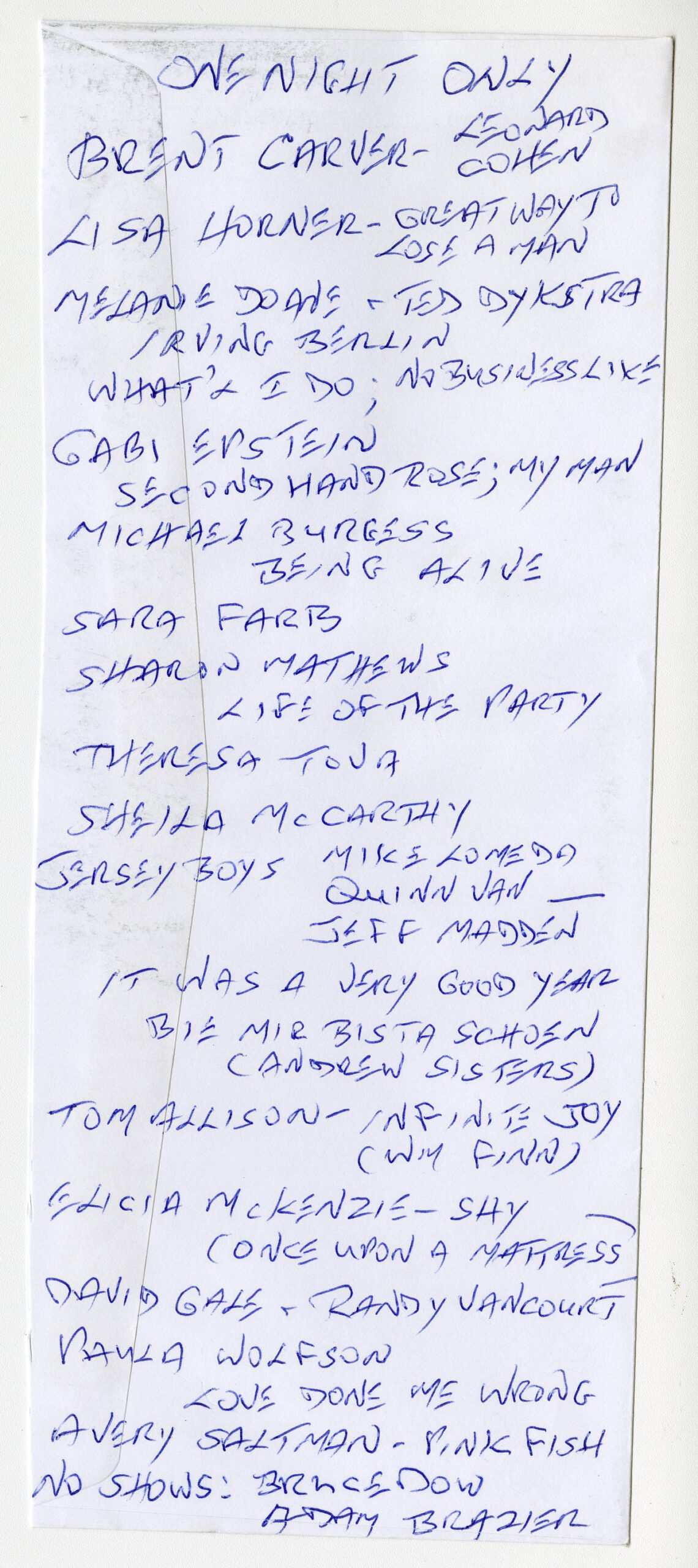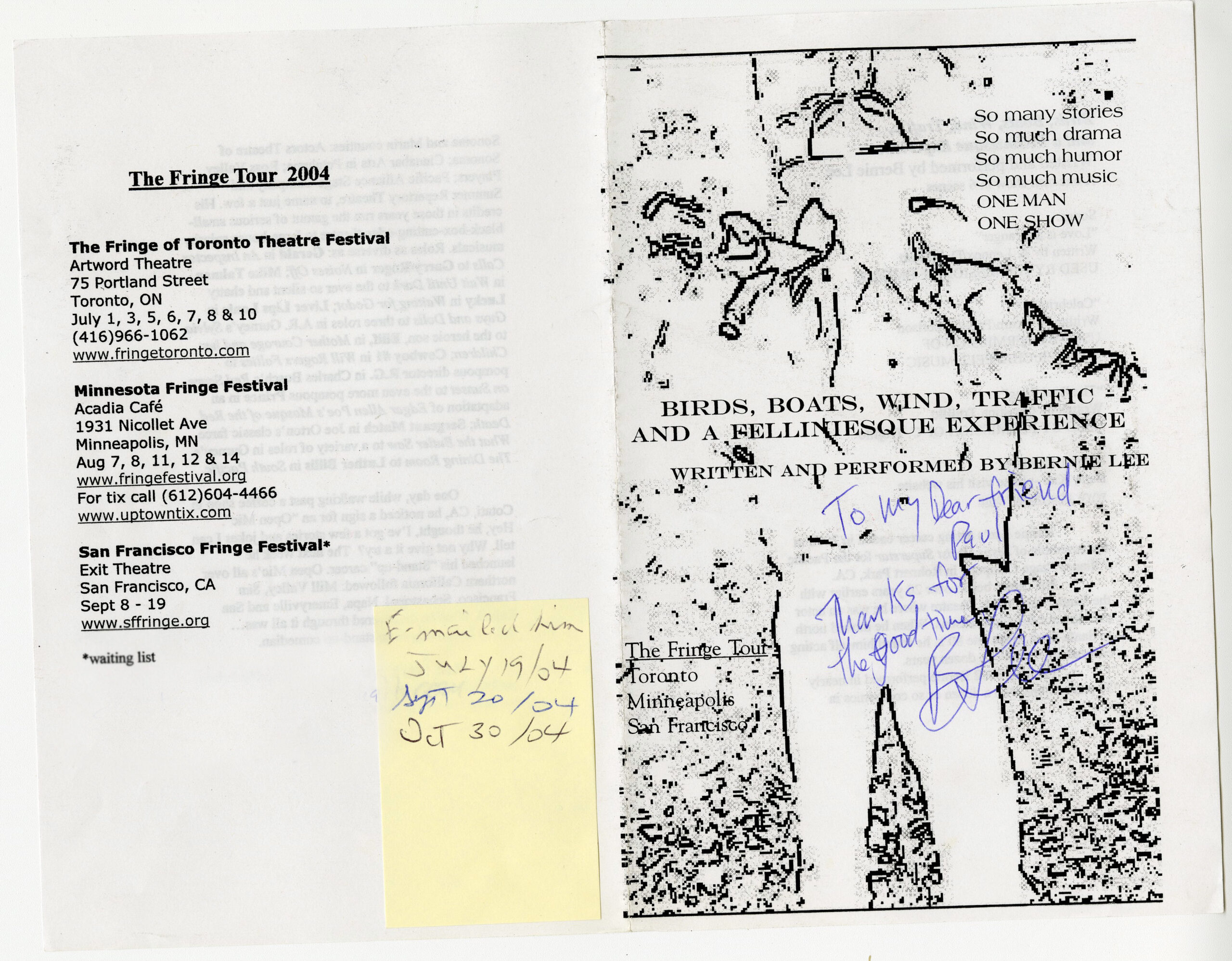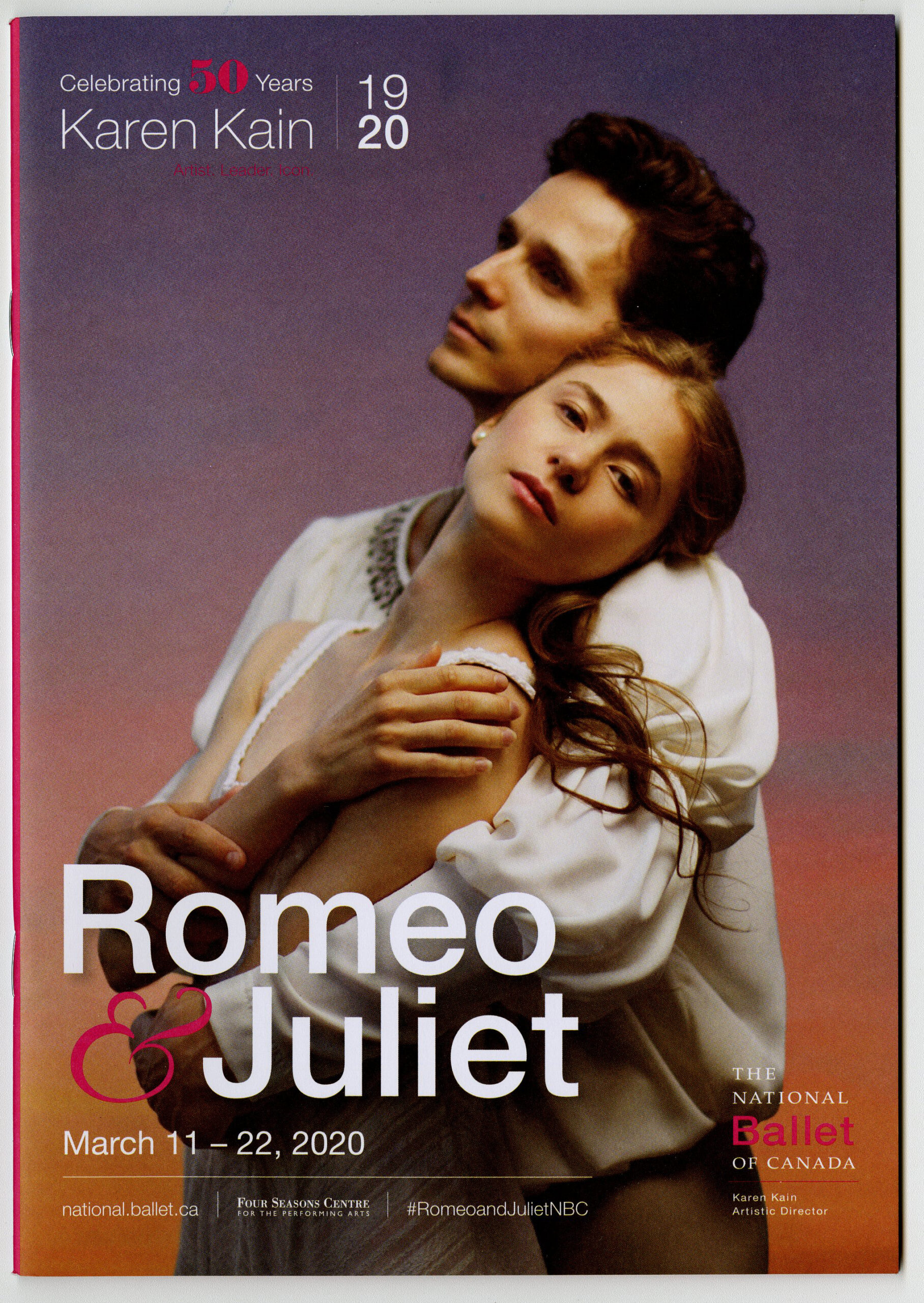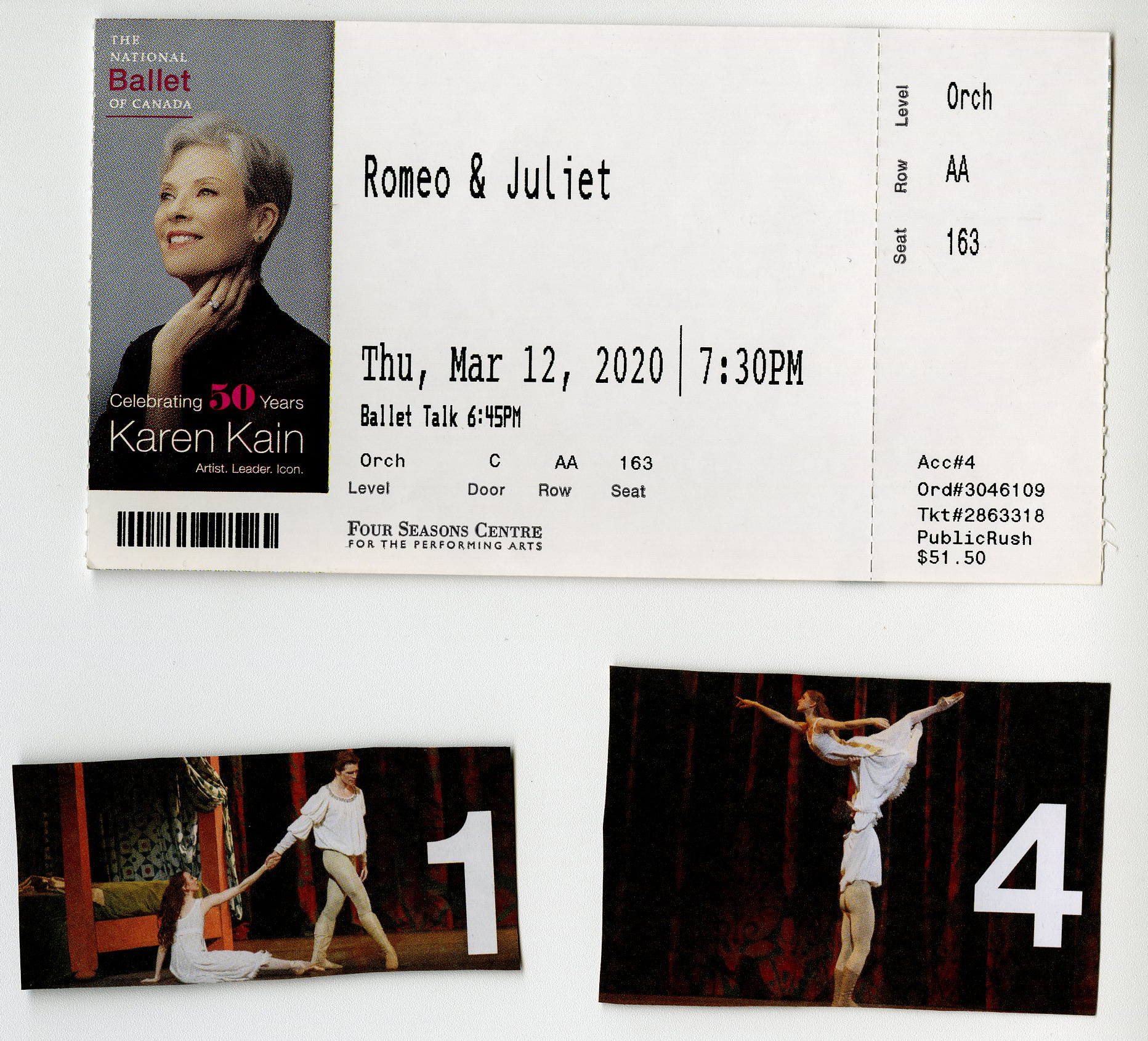By Toby Malone

September 17, 1937 – October 4, 2021
We can trace the origins of theatre programmes to the publicly-posted British playbills of the seventeenth century, which then evolved to personal souvenir printings in the late-nineteenth century. We defer to the Canadian spelling, although you might see the interchangeable American “programs,” or defaults to the brand name “Playbill,” but they all refer to the same tradition. These personal reference items are sometimes sold as lavish souvenirs but are most often given freely to theatre patrons as they take their seats, and can have multiple functions. Most practically, they are a guide to the on- and off-stage artists involved with that night’s entertainment, and might include notes from the director or guidance on casting changes. They are souvenirs, to be filed away or consulted, to be autographed or even framed. Toronto Star theatre critic Karen Fricker noted in an April 2023 article that these “bridges between the spectator and the theatrical experience” can even double as a diary of sorts. They are evidence of attendance, something to spark memory and reminiscence over the joy theatre can bring. Programmes can be as simple as a single photocopied sheet; they can be glossy, high-quality publications. Some feature photos, some barely feature the names of the artists. Some are as thick as a novella, some are no bigger than a napkin, while some are printed as an entire newspaper. For many, the physical programme is intrinsic to the theatre-going experience, and despite recent moves to replace physical programmes with digital, smartphone-centred equivalents, collectors cling tight to their physical mementoes.
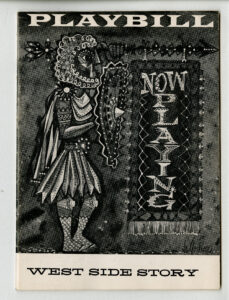
On October 21, 2021, Joseph Paul Christie—Paul to his many friends—passed away peacefully at home. Paul lived a long and joyous life, from his youth in Toronto to adventures in London as a bookseller and a distinguished career as a court reporter with the Ministry of the Ontario Attorney General, but one of his many defining traits was his love of the arts. For the last thirty years of his life, Paul served as a front of house team member (to over-simplify, we might say ‘usher’) at theatres around Toronto, most notably the Elgin and Winter Garden Theatres. From this insider’s position, Paul saw as much theatre as he could. His theatregoing career stretched back to boyhood, and lasted until he literally could not see any more plays, as the COVID-19 pandemic closed theatres in the spring of 2020. After Paul’s passing, the Toronto Metropolitan University Archives and Special Collections were honoured to receive a gift commemorating a life in the theatre. In dozens of carefully curated binders, we were presented every programme (and ticket stub, and clipping, and souvenir postcard) that Paul Christie collected over the course of sixty-eight years, filed chronologically and with extensive annotation to create the Paul Christie Theatre Program Collection reflecting a lifetime in the arts.
As a former theatre professional and current contract member of the TMU libraries team, I was thrilled to have the opportunity to help with the description and cataloguing of the Paul Christie collection. This collection stretches from the sporadic souvenirs of a teenage boy, starting with an autographed 1952 programme for a piano concert by Lubka Kolessa at Etobicoke Community Concerts Association, one of two items that year. From these humble beginnings, it is clear Paul “caught the bug,” a theatregoing habit which peaked in 2012, in which he attended one hundred and fifty six performances, at a rate of three per week. A lover of opera, orchestral performance, theatre, and dance, Paul’s tastes were eclectic and adventurous.

His collection spans the rise and fall of many of Toronto’s most legendary theatres, including the Crest Theatre, Theatre in the Dell, Centre Stage, and Melody Fair. He attended the first ever production at the O’Keefe Centre—Camelot featuring Julie Andrews and Richard Burton in 1960—and remained a patron of that venue as it evolved from the Hummingbird Centre to the Sony Centre to Meridian Hall. Paul’s theatregoing spanned the birth of Theatre Passe Muraille, the Factory Theatre, Soulpepper, and Buddies in Bad Times. He was a champion of the Toronto Fringe, and often attended a dozen shows in a single week to support new and emerging artists, evidenced by the intricate and specific notes he jotted in the margins. Paul was there when TIFF was still called the Festival of Festivals. He had his finger on the pulse of the next big thing: he saw world premieres of Hosanna at Tarragon, Kim’s Convenience at the Fringe and Come From Away at Sheridan College, all destined to become Canadian classics.
Paul briefly dabbled in the theatre himself, and several of his souvenir programmes note his involvement as playwright and actor with the Dickens Fellowship of Toronto. He played Herbert Pocket in his own adaptation of Great Expectations entitled The Benefactor, and later took on A Midsummer Night’s Dream’s Bottom in the Shakespeare Society of Toronto’s 1960 Twelfth Night Revels cabaret. While it was clear that the theatre was a crucial element in Paul’s life, he eventually left the stage to the professionals, and settled into his greatest role: audience member.
Paul was a globetrotting theatregoer, with almost annual trips to New York City to enjoy what Broadway had to offer. He saw the original production of West Side Story three times (and kept three programmes as proof), saw Barbra Streisand’s breakout role in Funny Girl, and was there for the rise of the megamusicals in the 1980’s (Cats, Phantom, and Les Mis were regular repeat watches). Paul’s time in London afforded him opportunities to soak up British theatre, which included works at the Royal Shakespeare Company, Theatre Royal Covent Garden, and the Royal Opera. He also took advantage of the proximity to the continent, taking in opera in Germany and Moliere in Paris. He travelled regularly around Canada, with theatre programmes marking stops in Vancouver, Charlottetown, Halifax, and, most often, Stratford and Niagara-on-the-Lake. The Shaw and Stratford Festivals held a place of great joy in Paul’s artistic pursuits, and he was a loyal patron for nearly seven decades.
The remarkable thing about the Paul Christie Theatre Programme collection lies not in the rarity of the items or the fame of its collector. Rather, it is a snapshot of a part of one man’s life that brought such great joy, in attending performances across an extraordinary range of genres. To read through the collection of more than four thousand theatre items is to get to know Paul. As an Elgin and Winter Garden employee, he witnessed many hundreds of performances of all types at both theatres, from touring musicals to high school rentals to the Dora Mavor Moore Awards. He attended Christmas Eve services each year at Roy Thomson Hall with the Metropolitan Community Church of Toronto, and carefully filed those programmes alongside the theatre ones. He was a proud ally of Toronto’s 2SLGBTQ+ community, and was an avid supporter of queer-themed plays, cabarets, and fundraisers, especially through the dark days of the 1980s AIDS epidemic and beyond. In this, it was clear just how much Paul valued community and the power of the arts. Paul loved to rub shoulders with celebrities, and sought autographs from his favourite performers (including Maureen Stapleton, Gwen Verdon, Martin Short, and Paul’s favourite, Grant Tilly), who often left him with autographs which made clear how much his support was appreciated.
Most incredibly, Paul used his theatre programme collection as a journal of sorts: each item is a treasure trove of annotations, opinions (where he would note his favourites in each show, and occasionally even those he did not care for), and clippings. From the earliest days in the collection, Paul collected newspaper articles and advertisements for the plays he had seen, and built intricate scrapbook pages to memorialise each performance. Sometimes he even returned to past entries to claim an autograph on a long-ago object or to supplement with new details. For the shows that did not offer a programme, Paul would make his own, on a napkin, or the back of an envelope.
In his latter years, Paul’s collecting intensified, and it is clear that live performance was an overriding preoccupation, particularly with the advent of cheap, convenient screenings of live opera, ballet and theatre in movie theatres. Even these movie ticket stubs, for events which usually do not provide a programme, were carefully annotated. Often, Paul would attend up to three or four films a week to see performances from the Metropolitan Opera, National Theatre of Great Britain, and Stratford Festival. Later entries even included developed photographs of the marquees and posters outside of theatres and cinemas, carefully placed to preserve a moment in time.
The final binders of Paul’s collection are heartbreaking in retrospect, because we know the world is about to change. In the first two months of 2020, Paul attended 21 performances, finishing with the National Ballet of Canada’s Romeo and Juliet at the Four Seasons Centre on March 12, 2020. After a lifetime of theatregoing, however, the COVID-19 pandemic abruptly shuttered the theatres and all at once closed the book on a lifetime in the audience. It is telling that Paul was so prolific until there were no more shows to see, and it must have been a devastating blow to lose this outlet.
When Paul passed away in October 2021, his love of the theatre proved central to how he was remembered by his many friends and family. We are honoured to preserve his lifetime in the theatre at the TMU Archives and Special Collections. After several months cataloguing this incredible collection, I feel as though I knew him.
